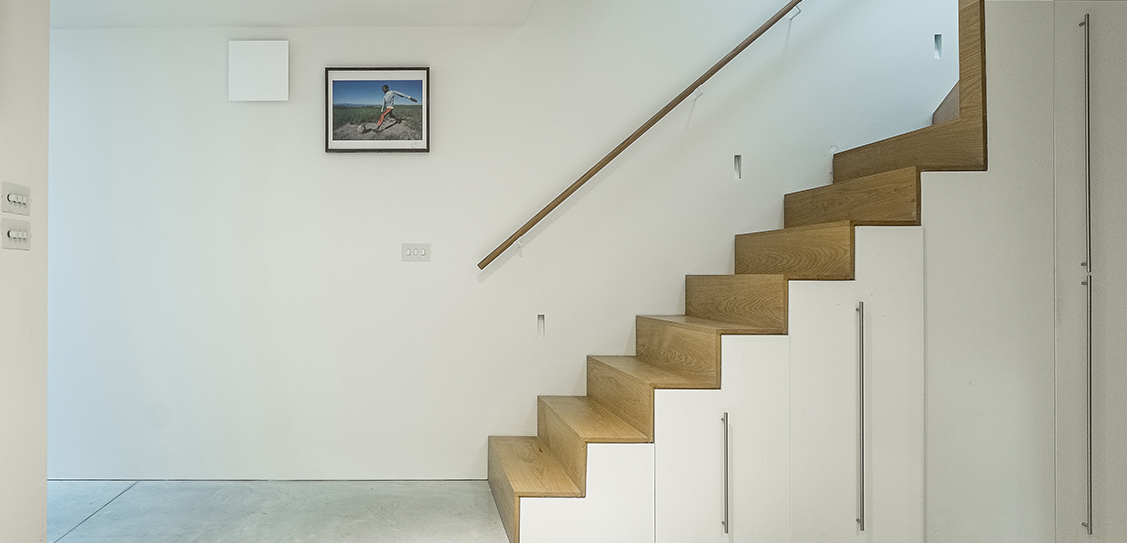When architect Alan Morris was first shown the site, an old Romany style caravan, once used as a writing studio, occupied the tranquil setting. The secluded garden, filled with birdsong and darting squirrels, became an important design inspiration for the finished result.
The south-facing site is a slender strip of land, measuring roughly 30m by seven metres, bounded at its northern extremity by a fine brick wall dating from the early 19th Century, originally the boundary of a former convent that adjoined the site. To the west, a flanking wall separates the new house from a housing development, the length of this wall dictating the extent of the new scheme’s upper storey. A similarly high wall to the east marks the end of the gardens of Victorian houses in an adjoining street.
The tight and highly constrained site, with no light or openings permitted on the new structure’s western elevation, dictated a linear elongated plan that was articulated into three massing elements. The single storey kitchen and living room flank a two storey central element matching the height of the closest house on the western boundary. The plan was then “cracked open” to create a dynamic in its relationship to the long passageway on the west and to allow a full height window on both floors looking north. The design celebrates its open southerly aspect with a generous glazed entrance that leads from the garden approach into the heart of the new dwelling, with kitchen, dining area and living space.
The client, who grew up in the main house, required a separate home for himself, with living accommodation at ground level and a bedroom plus an additional guest room that can be switched into a study on the upper level.
The architectural concept was to ensure the new timber-framed structure sits modestly and discreetly within its constrained setting. A weeping pear tree marks the pedestrian access point to the new building and its delicate pale green foliage inspired the choice of the upper storey’s subtle green zinc cladding, complementing the pale, dappled grey/white Petersen D72 brick.
The plan is deliberately dislocated so that the east wall splits away from the rear volume with views to the north to allow a tall two storey continuous slot window. This dramatic incision on the east wall breaks up the overall massing and allows interesting oblique views from inside the house, while the interlocking zinc and brick surfaces add further visual articulation.
Sliding and folding Vistaline triple-glazed entrance doors ensure generous daylighting, this sense of transparency further accentuating the flow of interior volumes at ground level. The longitudinal section of the house is stepped, with the sloping roof of the rear volume enabling a five metre wide strip window to be created, bringing the south light into what is otherwise a north-facing bedroom.
The house was designed to have high green credentials; the timber superstructure is constructed using high quality Swedish softwood and is insulated to provide a wall U value of 0.15, reducing heat loss and achieving an “A” energy rating substantially in excess of building regulations. A two kilowatt Ochsner, fully internal heat pump provides underfloor heating, and solar PV panels on the upper flat roof and the five kilowatt of battery storage, help to reduce grid consumption. Two green wildflower meadow roofs have been planted front and rear, on top of the kitchen and sitting room to the rear.
Two drainage systems for “dirty” and “clean” water with a 1,500 litre Graff Platin shallow tank reduce mains water consumption by feeding “clean” rainwater back to the WC’s, washing machine and irrigation of green roofs. The ground level polished concrete floor, pigmented white, has a high thermal mass to optimise the underfloor heating system.



